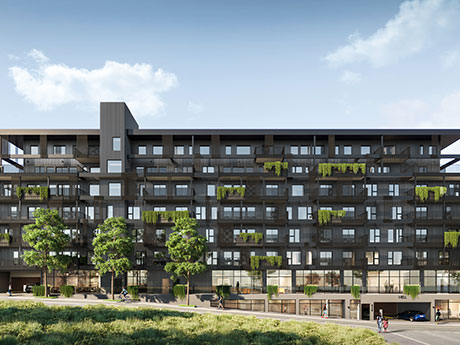By John Bogdasarian, Promanas
At a time when the multifamily marketplace is experiencing some turbulence after an extended period of strong growth, some developers, owners and investors are rethinking, repositioning and reworking their approach to a commercial real estate sector that has historically been one of the most reliable investments and dependable asset classes.
Current market conditions, however, are not as favorable. A report by The Motley Fool this summer highlighted a 21 percent decline in apartment value. Overbuilding has saturated some markets, contributing to an increase in vacancy rates to around 7 percent and helping push rent growth down to 0.8 percent. In conjunction with persistently high interest rates and increasing delinquency issues with renters, the result is that building a traditional apartment product is a very tricky proposition.

Even though the apartment market is somewhat dysfunctional at the moment, there are still plenty of opportunities in multifamily. For thought leaders and forward-thinking commercial real estate investors and professionals, the key is to understand the market, be flexible in your development and investment strategies, and be able to execute an approach that does work in the current marketplace.
For those looking to maximize multifamily returns in 2024, there are two strategies that could help diversify and strengthen their multifamily portfolios.
The long and the short of it
In an uneven multifamily market, the short-term rental (STR) space is one that continues to thrive. The challenge, however, is that some of the biggest brands in the STR industry have received more than their share of negative press in the last year or two, and developers who have clumsily purchased properties in popular destination communities and converted them to STR assets have soured many communities against the concept and contributed to the bad press.
Consequently, we have seen some pushback and subsequent zoning reforms from communities that are specifically designed to discourage this practice.
The good news is that while STR opportunities need to be extremely selective, the right project in the right market, executed the right way, can be both popular and profitable. Many of the best examples of STR successes are located in resort or destination communities with favorable hospitality zoning: condo-style projects that operate in many ways like a hotel property. It is not hard to recognize why an STR approach is so intriguing when you look at the numbers.
The same unit that you might be able to rent out for $3,000 a month will likely rent for $600 per night as an STR space. Even at 65 percent occupancy, you are still looking at $12,000 monthly gross revenue generated for the same unit. While there will likely be some modest expenses associated with things like STR management fees, the math is still undeniably appealing.
While the best examples of thoughtfully designed, developed and managed STR projects are generating very strong returns, development and investment professionals need to recognize that threading the STR needle remains a challenging proposition that not every developer can pull off.
These projects are extremely nuanced in terms of zoning challenges, back-of-house operational elements and critical synergies with retail and entertainment assets and amenities. With so many moving parts for these select opportunities, it takes a very specific skill set to capitalize. But, for those who have that skill set, this product can be an exciting opportunity for investors in a challenging multifamily environment.
Pre-sale profitability
Another opportunity for multifamily developers looking to navigate tough multifamily terrain is less about a product type and more about a financial strategy: specifically, the benefits of a pre-sales approach. Pre-sales can be good for developers because they de-risk the project, and good for investors in the sense that they are generally able to buy into an opportunity at a more favorable price point.
For commercial real estate developers and investors, grouping a block of STR units into a single-purpose entity (SPE) and putting, say, 40 percent down up front is a great way to generate potentially significant cash flow. There is also some welcome flexibility in the sense that there are plenty of investors out there who may not want to commit to purchasing a unit but would be interested in buying into a block or even individually and benefit from the ongoing cash flow.
This kind of pooled pre-sales approach is understandably attractive to help maintain a high debt service coverage ratio. It is correctly seen as a potentially reliable and high-performing multifamily investment product in a commercial real estate segment and set of market conditions where those opportunities are not as abundant as they were in the relatively recent past.
In 2024, a unique constellation of challenges and market opportunities will emerge. However, one constant for commercial real estate professionals remains: success favors those who understand market context. Those who evolve and adapt their development and investment strategies accordingly will be the ones who continue to thrive no matter what the industry landscape looks like.
John Bogdasarian, CCIM, is founder, president and CEO of Promanas, a Michigan-based private equity real estate firm. This article originally appeared in the December 2023 issue of Heartland Real Estate Business magazine.


